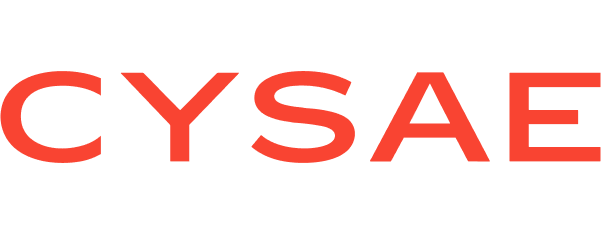As the European regulatory landscape for crypto-assets evolves, the Markets in Crypto-Assets Regulation (MiCA) introduces significant changes that could affect staking agreements and related services. While staking itself is not explicitly defined within MiCA, any entity that facilitates staking services could fall under its scope if it engages in regulated activities such as custody or trading. This article explores how MiCA provisions apply to crypto-asset service providers (CASPs) and what staking businesses should consider to avoid full compliance obligations while ensuring solid legal frameworks.
Obligations Imposed on CASPs Under MiCA
MiCA establishes strict operational standards and risk management for CASPs, especially those offering custody and trading services. The main obligations include:
- Authorization Requirement: CASPs must obtain authorization from competent authorities to provide services that involve crypto-assets or related services.
- Disclosure Requirements: Providers must clearly disclose all associated risks, fees, and terms related to their services. This includes policies on service costs, pricing, and tariffs.
- AML/CFT Controls: CASPs must implement measures related to anti-money laundering (AML) and counter-financing of terrorism (CFT), including customer due diligence (CDD) processes.
- Segregation of Assets: Providers are required to segregate user assets from the providers’ own assets, ensuring that user assets are protected and separate from any potential liabilities.
- Operational Resilience: Complying with the Digital Operational Resilience Act (DORA) ensures that providers have robust systems to mitigate cybersecurity risks and operational disruptions.
EBA’s Perspective on Staking Risks
The report highlights several critical areas where staking agreements present risks, emphasizing the need for clear limit frameworks:
- Information Asymmetry: Many staking providers do not provide sufficient information about conditions, risks, and responsibilities regarding the services offered, which could lead to conflicts or legal issues.
- Penalties and “Slashing”: The EBA notes that centralized platforms offering staking services may impose penalties like “slashing,” stressing the importance of transparency in their contractual terms.
- Market Risks: Liquid staking tokens (LST) introduce additional risks, such as the potential for these tokens to be highly volatile. Providers need to ensure adequate safeguards to protect users from such volatility.
- Breaches in AML/CFT: Staking DeFi protocols lack adequate anti-money laundering (AML) and counter-financing of terrorism (CFT) controls, creating gaps in regulatory compliance. However, the report stresses the importance of integrating these controls to address compliance gaps in staking services.
Strategies to Avoid Full MiCA Compliance
To minimize the regulatory burden imposed by MiCA, staking businesses should adopt strategies that reduce their classification as CASPs.
- Non-Custodial Models: By adopting non-custodial staking solutions, providers avoid holding users’ private keys, thereby circumventing obligations related to custody. For example, self-custody wallets allow users to maintain control over their assets while still participating in staking.
- Decentralized Protocols: Offering access to fully decentralized staking protocols that act as intermediaries may help providers stay outside the scope of MiCA. However, providers must carefully consider how to maintain transparency and educate users.
- Limited Services: Limiting the role of providing advisory services or managing user assets also helps providers reduce regulatory obligations. However, it is important to ensure that users still have proper information and resources to participate in staking activities.
Clear Contractual Terms for Businesses:
Regardless of whether a provider seeks full MiCA compliance, incorporating measures to ensure clarity and protect all parties is key to maintaining trust:
- Clear Definitions: Contracts should clearly define key terms such as “staking,” “liquid staking,” “slashing,” and “staking rewards” to ensure mutual understanding.
- Risk Disclosure: Providers should clearly explain the risks involved, including volatility, staking rewards, and any restrictions on withdrawals.
- Revenue and Profit Margins: Clearly define the economic model, including service fees, validator commission structures, and any additional costs deducted from staking rewards. Transparency in margins ensures predictable revenue flows and mitigates disputes with partners or clients.
- Operating Costs and Profitability: Staking agreements should detail the cost structure, including infrastructure costs, validator fees, and compliance-related costs (such as AML/KYC processes). Understanding these variables helps companies maintain a sustainable profit margin.
- Responsibility and Risk Assignment: Specify how risks (such as liquidity risks, smart contract vulnerabilities, and regulatory risks) are assigned between parties. Limiting exposure to external factors is crucial for financial stability.
- Exit and Liquidity Management: Clearly define the redemption mechanisms and the potential restrictions on liquidity. If the staking model is based on tokens, it should account for the possibility of fluctuations in the market value of those tokens.
- Jurisdiction and Regulatory Flexibility: Given the evolving regulatory landscape, staking agreements should allow for adaptations, including the ability to renegotiate or restructure in response to new regulatory requirements.
- Institutional and B2B Relationships: Work with institutional clients and B2B partners to ensure that the service level agreements (SLA), exclusivity clauses, and other structures are legally compliant and sustainable in the long term.
- AML/CFT Provisions: Even if the service is non-custodial, contracts should emphasize compliance with local AML/CFT regulations to promote responsible participation.
Conclusion:
For companies operating in the staking space, understanding the implications of MiCA is crucial. Although staking itself is not explicitly regulated, entities that provide services related to custody or trading must comply with strict CASP obligations. To avoid these burdens, providers can explore non-custodial or purely decentralized models. At the same time, well-drafted staking agreements that prioritize transparency and consumer protection can enhance credibility and attract more participants.
Disclaimer: This article provides general guidance and does not constitute legal advice. Always consult with qualified professionals before making regulatory decisions, such as the team at Cysae Legal. We make compliance less painful and more strategic.




